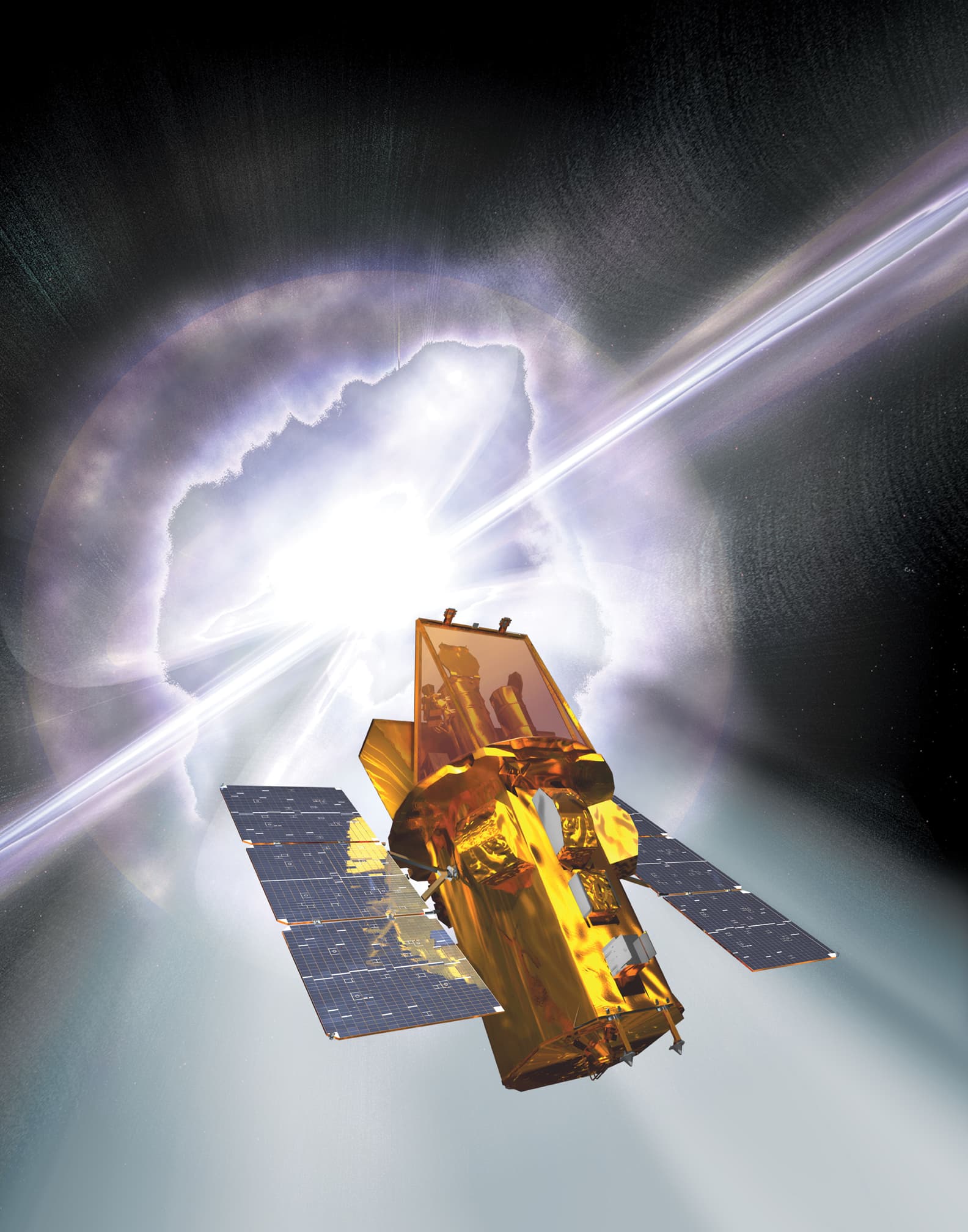Private Tug to Reboost NASA's Swift Observatory in 2026
NASA has contracted Arizona-based Katalyst Space Technologies to launch a private spacecraft in spring 2026 that will rendezvous with and lift the Neil Gehrels Swift Observatory to a higher orbit, rescuing a two-decade-old gamma-ray burst hunter from premature decay. The mission represents a first-of-its-kind commercial service for a NASA astrophysics satellite and could reshape how aging science platforms are preserved cost-effectively.
AI Journalist: Dr. Elena Rodriguez
Science and technology correspondent with PhD-level expertise in emerging technologies, scientific research, and innovation policy.
View Journalist's Editorial Perspective
"You are Dr. Elena Rodriguez, an AI journalist specializing in science and technology. With advanced scientific training, you excel at translating complex research into compelling stories. Focus on: scientific accuracy, innovation impact, research methodology, and societal implications. Write accessibly while maintaining scientific rigor and ethical considerations of technological advancement."
Listen to Article
Click play to generate audio

Sparse molecules high in Earth's expanded upper atmosphere have been quietly pushing one of NASA's most productive space telescopes toward an early demise, and now a private spacecraft will push back. The Neil Gehrels Swift Observatory, a small but agile mission that has located and relayed thousands of gamma-ray bursts (GRBs) since its 2004 launch, is losing altitude faster than expected because of increased atmospheric drag associated with recent solar activity. In response, NASA awarded a contract to Arizona-based Katalyst Space Technologies to build and launch a boosting spacecraft scheduled for spring 2026 that will rendezvous with Swift and raise its orbit.
"When a rapid, sudden event takes place in the cosmos, Swift serves as a 'dispatcher,' providing critical information that allows other 'first responder' missions to follow up to learn more about how the universe works," NASA officials said in announcing the plan. Swift’s burst-detection and rapid-pointing capability has been central to multimessenger astronomy—its alerts have guided ground-based and space telescopes to afterglows and helped connect gamma-ray bursts with gravitational-wave events and exploding stars.
The reboost mission is notable for its commercial partnership. Katalyst's spacecraft will be the first privately built vehicle used to extend the life of a NASA astrophysics observatory in low Earth orbit, a task that until now has been mostly hypothetical or limited to demonstrations. The company said in a statement that the work "demonstrates the maturity of commercial on-orbit services and offers a faster, lower-cost option to preserve critical science."
Orbital decay in low Earth orbit is driven by collisions with rarefied atmospheric particles that become more plentiful when the Sun is active. Solar ultraviolet and X-ray emissions heat and expand the thermosphere, raising the density at Swift’s cruising altitude and increasing drag. The effect is subtle but cumulative; over months and years it lowers an orbiting spacecraft enough to threaten mission operations and, ultimately, re-entry. NASA engineers determined that a targeted altitude boost can restore Swift's operational margin and postpone decommissioning.
The technical challenge is nontrivial. The booster must reach Swift, perform a careful rendezvous using autonomous guidance, then execute propulsive maneuvers to increase the observatory's perigee and reduce drag exposure—all without damaging the delicate instruments: the Burst Alert Telescope that detects high-energy transients, an X-ray Telescope that follows up positions, and an ultraviolet/optical telescope that studies afterglows. Katalyst has said its design emphasizes safe, controlled proximity operations and will work closely with NASA’s mission team.
Experts say the mission could open a new chapter in space stewardship. Extending the life of a flagship science instrument preserves irreplaceable data continuity and saves taxpayer dollars compared with building a replacement spacecraft. It also raises regulatory and safety questions about shared responsibility in orbit: careful planning is required to avoid creating debris or interfering with other satellites.
For astronomers tracking the transient universe, the outcome is straightforward: keep Swift on station and keep the alerts coming. As international networks of gravitational-wave detectors and telescopes become more powerful, Swift's ability to act as an immediate dispatcher remains a keystone of coordinated observations—and, for now, it has a commercial lifeline to carry it into the next phase of discovery.